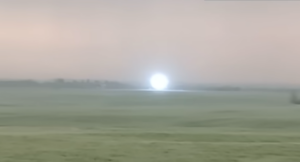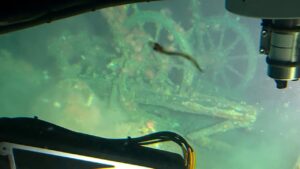
Photo: Masatatsu Abe
A Japanese rickshaw driver has come up with a unique way of taking a break from pulling tourists around Tokyo’s old entertainment district. Masatatsu Abe will pull a sledge 900km from the Antarctic coast to the South Pole.
The 35-year-old Abe will walk solo, unassisted and unsupported from the Messner start on the Ronne Ice Shelf to the South Pole. He expects to take around 40 days, averaging 20km a day at first but increasing to 30km as his 110kg sled lightens. He considers this a shakedown trip for a much longer Antarctic journey next year: retracing the steps of Japanese Army Lieutenant Nobu Shirase, who organized Japan’s first expedition to Antarctica in 1910. Abe hopes to succeed where the little-known Shirase failed.
Hailing from the cold northern prefecture of Akita, Abe began his adventures while still at university, with a 290-day, 11,000-km bicycle expedition down the spine of South America. Abe has also trekked the Continental Divide Trail from Canada to Mexico (4,200km), the Great Divide Trail in Canada (1,200km) and did a partial descent of the Amazon River on a homemade raft during the dry season (2,000km).
More recently, he has focused on manhauling and has pulled a sled 600km from Resolute Bay to Grise Fiord in the Canadian High Arctic and 500km from Clyde River to Pond Inlet on Baffin Island. He also sledded 750km across Greenland. In contrast to the Japanese tendency to act as a group, Abe finds aesthetic value in solitary expeditions. “I think solo and unsupported is very beautiful.”
To raise funds for his upcoming Antarctic expedition, Abe pulled his rickshaw around 68 prominent shrines in Japan, clocking 6,400km along the way.
ExplorersWeb caught up with Abe as he prepared to leave for Antarctica.

Abe enjoying a spot of rain on his 6,400km walk around Japan, hauling a rickshaw. Photo: Masatatsu Abe.
EW: How have you prepared for this trek?
Masatatsu Abe: My work as a rickshaw driver is good daily training because I usually clock 20 to 30km a day, but I have supplemented this with dragging tires for one to two hours, five days a week. A week or two ago, I weighed in at 70kg and 13 percent body fat, which is up from my usual 66kg. I supplemented my own arctic experience with training under [polar guide] Eric Larsen last January.

Arctic training with polar guide Eric Larson in January 2018.
EW: What you are taking?
MA: I will mostly rely on high-energy food: 200g packs of butter, mixed nuts, stuff like that. But I will also take dehydrated rice and miso soup as comfort food. You have to have something to look forward to.
In terms of equipment, I will take all the usual things, including a satellite phone for daily check-ins. I will also take an MP3 player with a lot of music. I like many genres, but I find classical music is best for expeditions. I also have a bamboo flute, which I will play in my tent in the evening.

If you happen to hear a bamboo flute on your trek across Antarctica this year, it will probably be Abe. Photo: Masatatsu Abe
EW: What are your biggest concerns?
MA: The wind, actually. The Arctic is fairly calm, but katabatic winds in the Antarctic means that I can end up battling headwinds for long periods. Crevasses are not an issue because the people at ALE can tell me their location. To be honest, raising the money was the hardest part.
EW: How much will this cost and how have you funded it?
MA: Adventurers — myself included — are pretty poor at raising money. It’s a real pain in the neck. Roughly, my expenses have been as follows.
· Charter flights in Antarctica, food and fuel: $89,000
· Equipment: $9,000
· Shipping costs (Japan to Antarctica): $4,500
· Travel expenses (round trip Japan to Punta Arenas, Chile): $4,500
· Satellite communications: $2,000
· Insurance: $2,500
Of course, I earned money from my day job as a rickshaw driver and I have a few sponsors, too. Crowd funding has helped somewhat, but holding funding parties at which I talk about my past and upcoming expeditions helped more.

Some of Abe’s clothing for the upcoming expedition. Photo: Masatatsu Abe
EW: Tell us a little about your plans next season?
MA: I will retrace the steps of Nobu Shirase, the first Japanese person to land on Antarctica. He did not make it all the way to the South Pole, so I hope to complete this on his behalf. I have not decided on the exact route yet. The biggest problem is the charter flight costs. It’s really expensive to fly to the Ross Ice Shelf, but significantly cheaper to start from Axel Heiberg.
EW: What is so interesting about Nobu Shirase that makes you want to retrace his steps?
MA: He comes from Akita, the same prefecture as I do. As an elementary school student, I read his biography and was impressed by his strength of will. I mean, it’s pretty amazing that he went to Antarctica in nothing but a refitted fishing boat. In Japanese, we have the expression ”虚仮の一念岩をも通す”, which loosely translates to, “the faith of fools will move mountains”. So basically, my aim is to realize his dream, which has remained incomplete for over 100 years.
Nobu Shirase
Japanese Army Lieutenant Nobu Shirase left Tokyo in December 1910 aboard the 204-ton Kainan Maru. Heavy sea ice prevented him from landing that year. Two years later, in January 1912, he set off from Australia with 29 sledge dogs on board. Apparently, he met Roald Amundsen’s South Pole expedition near the Bay of Whales, on their way home from the South Pole.
The expedition split into a coastal surveying party and a group aiming to reach the South Pole. Shirase led six other men on a traverse of the Ross Ice Shelf and reached 80°05’S, 156°37’W on January 28, 1912. He claimed the entire Ross Ice Shelf for Japan and called it Yamato Yukihara (the Japan Snow Plain). The Shirase expedition is notable for avoiding fatalities during its stay in Antarctica.
Shirase and his men were also the first people to land on the Edward VII Peninsula.

Nobu Shirase. Photo: Shirase Antarctic Expedition Memorial Museum
Links:
Jinriki Support
Twitter
Instagram
https://explorersweb.com/2018/10/29/antarctica-2018-2019-expeditions-to-watch-part-ii/






